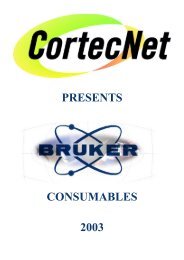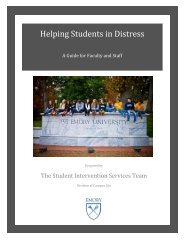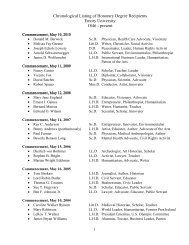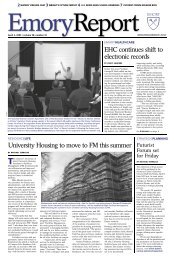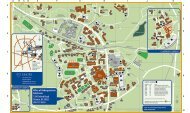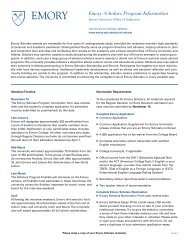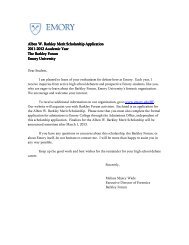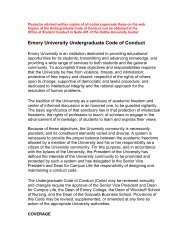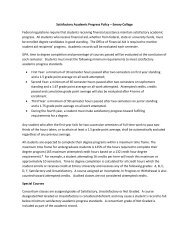DOSY Experiments - Emory University
DOSY Experiments - Emory University
DOSY Experiments - Emory University
You also want an ePaper? Increase the reach of your titles
YUMPU automatically turns print PDFs into web optimized ePapers that Google loves.
<strong>DOSY</strong> pulse sequences use the gradient stimulated echo element (or one of its modifications):<br />
In the <strong>DOSY</strong> experiments the strength of the diffusion-encoding gradient is arrayed and the<br />
diffusion coefficients are calculated according to the Stejskal-Tanner formula:<br />
where S(Gzi) and S(0) are the signal intensities obtained with gradients strengths of Giz and 0,<br />
respectively, D is the diffusion coefficient, γ is the gyromagnetic constant, δ is the gradient pulse<br />
duration and Δ is the diffusion delay.<br />
From the formula alone one can get valuable hints on how to set <strong>DOSY</strong>-related parameters in<br />
different pulse sequences.<br />
(γδGzi) 2 – gradient pulse area squared<br />
a: nuclei with higher γ are more sensitive to diffusion than the low-γ nuclei. (If possible,<br />
observe 1 H or 19 F, or at least do the diffusion-encoding step on the high-γ nucleus (see<br />
Dbppsteinept).<br />
b: shaping a gradient dramatically reduces its phase encoding efficiency. Although the<br />
VNMR software enables the shaping of gradients on VNMRS or 400-MR spectrometers,<br />
it is not really recommended.<br />
δ – gradient pulse duration<br />
during δ (and the subsequent gradient stabilization delay, gstab) the magnetization is<br />
transverse and subject to T2 relaxation and homonuclear J-evolution. Do not use long δ<br />
values in the presence of large homonuclear couplings or short T2 relaxation times (δ




